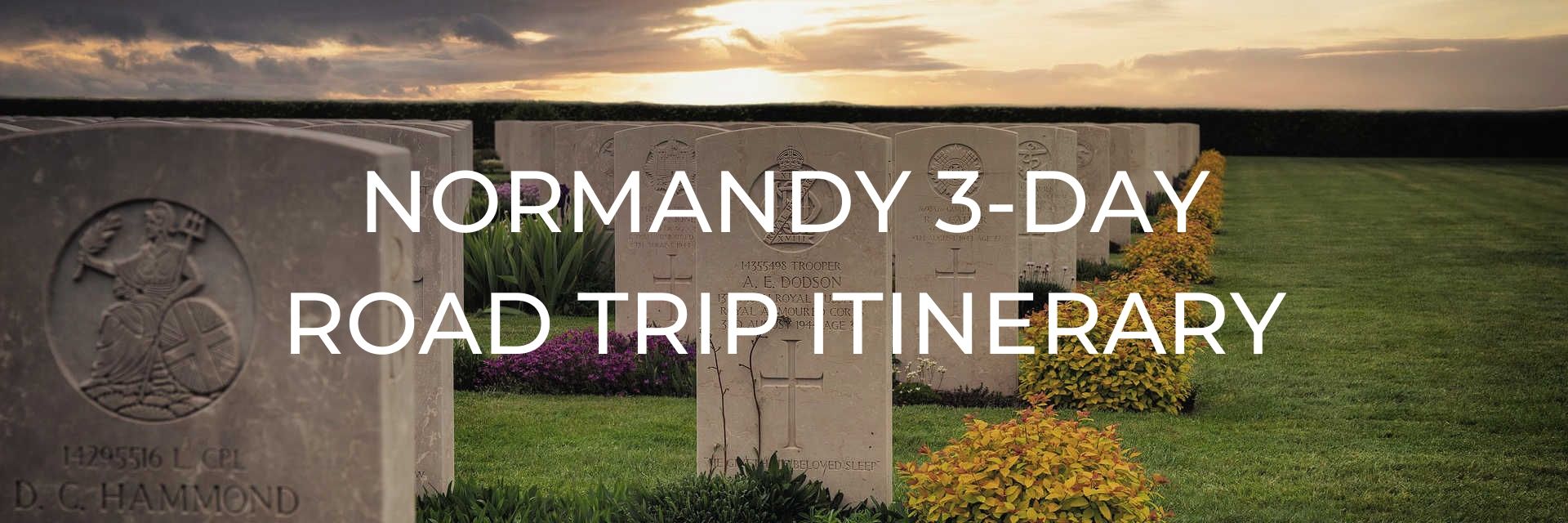
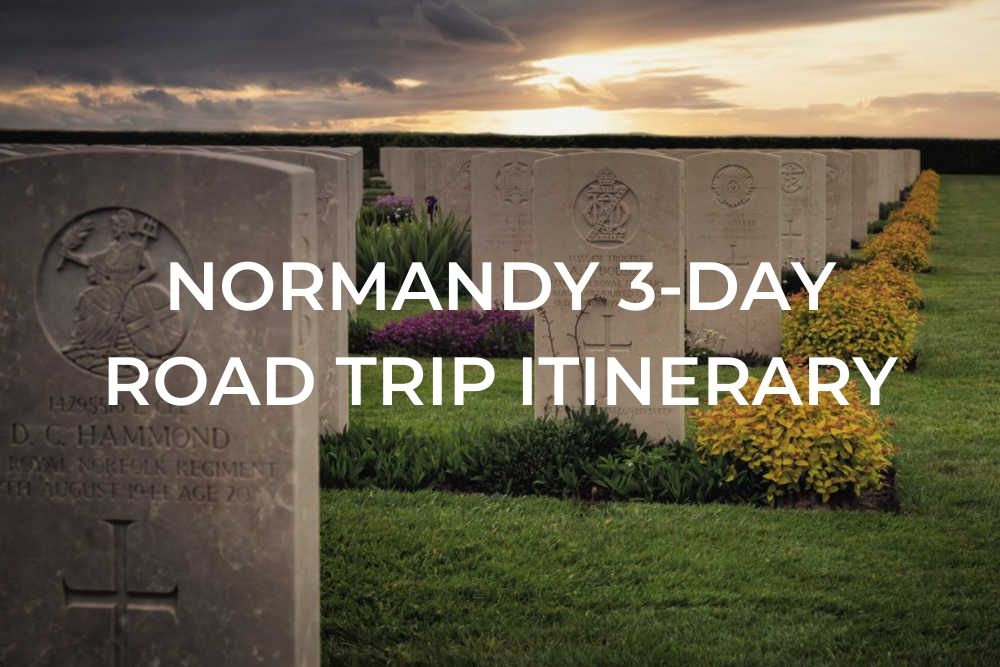
Normandy is a beautiful part of northern France to visit, but many visitors come for the sights that relate to the Battle of Normandy. The battle raged from D-Day on the 6th June 1944 until the end of August. A surprising amount of sites survive to this day, from huge batteries that formed part of the Atlantic Wall to parts of the Mulberry Harbour still resting on Gold Beach.
This suggested (and tested!) itinerary will help you get the most of this historic part of France. We explored the whole of the area from Utah Beach in the west to Sword Beach in the east and beyond. If you have more time to visit you can add in some more of the many museums that cover many different aspects of D-Day and the Battle of Normandy or take in some great places which are unrelated to World War II.
Want to save this for later? Click the Pinterest button on the left for a pinnable image!
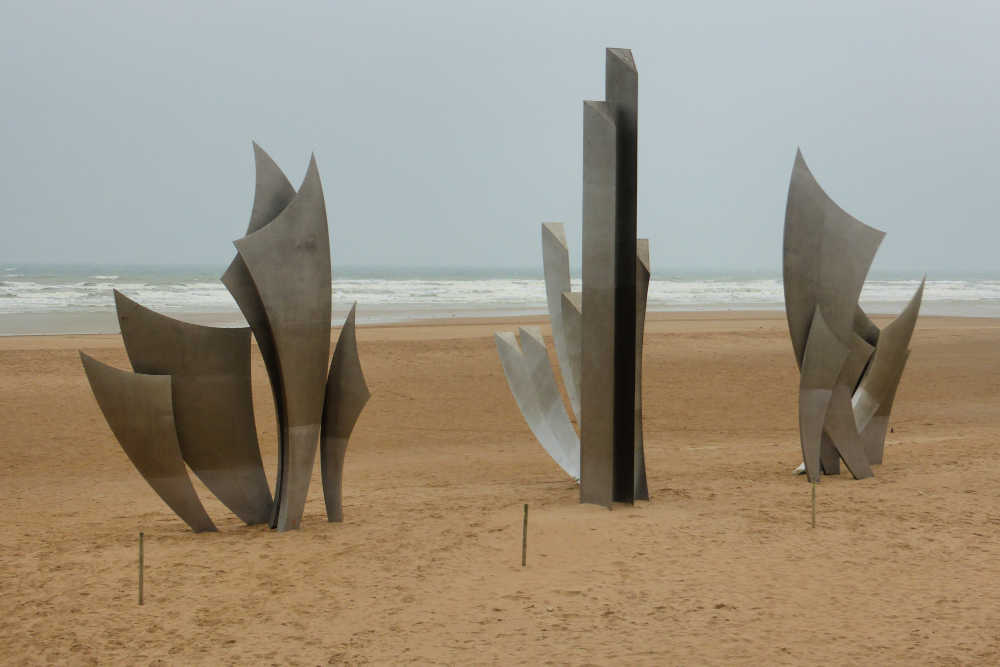
This post may contain affiliate links. Please read our full disclosure policy here.
To get the most out of Normandy you’ll need a car. You won’t be able to get to many of the sites which can be quite remote by public transport in a sensible amount of time or possibly at all. By having a car you can wander through the countryside, visit small villages, explore old bunkers and just stop wherever you want when you spot something interesting.
So let’s hop in the car and take a 3-day road trip around Normandy!
NORMANDY ROAD TRIP OVERVIEW
- Travel to Normandy
- DAY 1: Crisbecq and Azeville Batteries | Utah Beach and Landing Museum | La Cambe Cemetery | Maisy Battery | Pointe du Hoc | Omaha Beach and Normandy American Cemetery
- DAY 2: Bayeux British Cemetery | Bayeux Cathedral | Bayeux Tapestry | Longues-Sur-Mer Battery | Musée du Débarquement | Gold Beach and Mulberry Harbour | Juno Beach and Juno Beach Centre | Sword Beach | Beny-sur-Mer Cemetery
- DAY 3: Site Hillman | Memorial Pegasus | Ranville Cemetery and Church | Mont Canisy Battery | Villerville Pillboxes | Honfleur
- Travel Home from Normandy
Click the link on the “DAY” to quickly jump to that section of this itinerary.
NORMANDY ROAD TRIP MAP
Please feel free to download this map for your personal use when planning your trip.
To download this Google Map, click on the grey star at the top of the map and this map will be added to your Google Maps account. You can then view it on your phone or computer in Google Maps by clicking on the menu button, going to “Your Places” and selecting this map.
We use these maps in the planning stage of creating all our itineraries as you can set out your plan in advance and then quickly reference these maps through the planning process.
WHERE TO STAY IN NORMANDY
Normandy is compact enough that you can set up camp in one spot rather than move from night to night. We picked somewhere fairly central, but you could pretty much do this itinerary whilst staying anywhere within striking distance of the coast.
RECOMMENDED: Ferme de la Rançonnière 3-star hotel in Crepon
This wonderful hotel is centrally located to all the D-Day sites in Normandy, beautifully rustic and charming, excellent dining, and the staff were very helpful prior to arrival answering our question about the accommodations and booking us a specific room.
This hotel also regularly offers deals which include room, breakfast and dinner in their restaurant. We enjoyed two meals at the restaurant, one each from their Terroir and Gastronomic menus, and enjoyed fantastic food both times during our three-night stay.
Crisbecq and Azeville Batteries | Utah Beach and Landing Museum | La Cambe Cemetery | Maisy Battery | Pointe du Hoc | Omaha Beach and Normandy American Cemetery
Our trip starts out West in the American landing zones of Utah and Omaha Beach. The first stops are two of the enormous batteries that formed part of the Atlantic Wall. Crisbecq and Azeville batteries held large, long-range, artillery that threatened the landing forces and the ships that supported them. At Crisbecq you can understand what it took to destroy these guns, which basically required a direct hit on the concrete classmate.
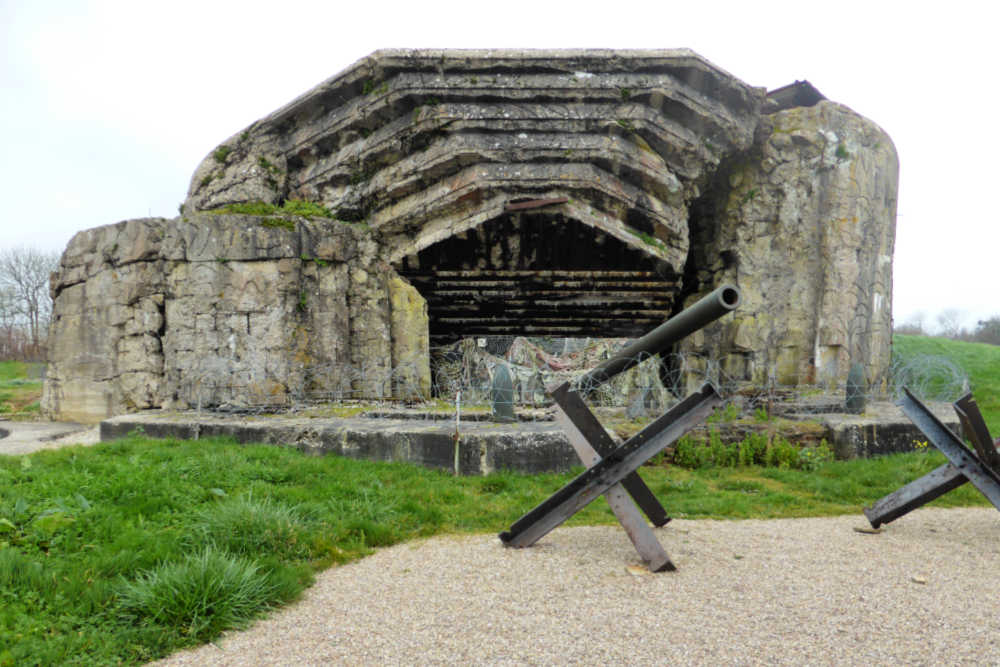
From the batteries, it’s time to visit the first of the five beaches. Utah beach is the furthest west of the landing beaches and 23,000 men landed here on D-Day. It was here that a German soldier was quoted as saying “The sea is black with ships”, such was the size of the attacking force. Today, the sandy beach is as tranquil as any other beach in the world and it’s hard to imagine what it would have been like back on the 6th June 1944.
For a first insight into the events of D-Day, a visit to the Utah Beach Landing Museum right next to the beach is next on our itinerary. The museum houses several military vehicles as well as a B26 bomber, thousands of which attacked the enemy before, during and after D-Day. This bomber is painted in the colours of Major Dewhurst who led the final bombing run over Utah beach. Outside the museum are several monuments related to D-Day.
Our next stop might be a bit jarring to some people, but we stopped at La Cambe German War Cemetery. The vast majority of the German soldiers stationed on the Atlantic Wall, defending France, didn’t want to be there. They were men whose lives were cut short due to the actions of others just the same as the Allied soldiers who died. The cemetery holds 21,139 bodies and the focal point it the large central mound, which is a common grave, topped by a large cross.
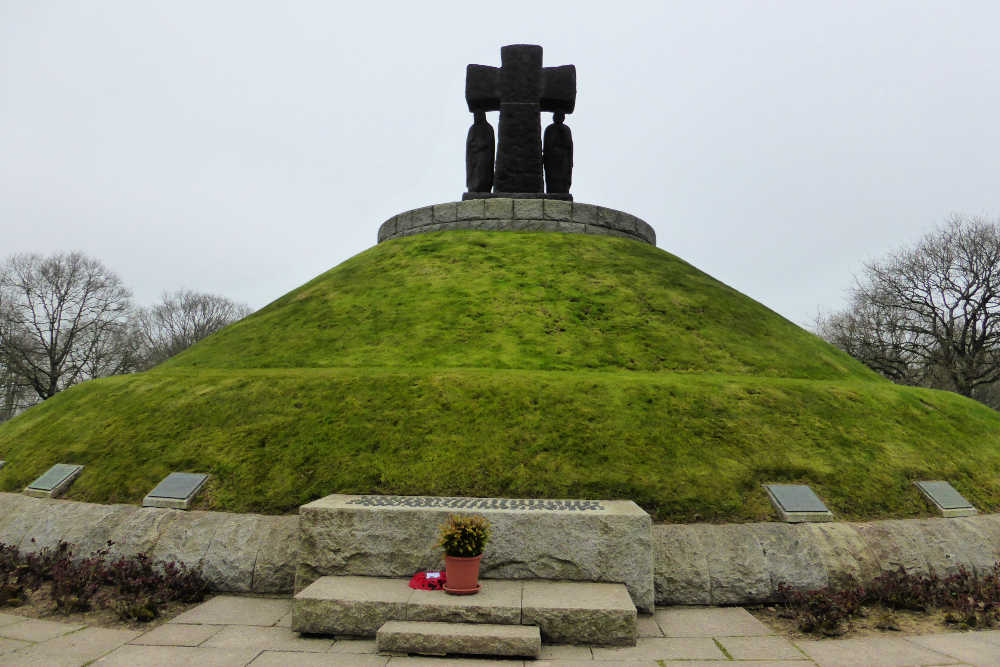
Another battery is up next and the interesting theories and history of Maisy Battery make it a worthwhile stop. The site was lost to history until 2004 and its rediscovery has led to some interesting theories of how and why it was lost and whether some of the events and tactics of D-Day should be reassessed.
The rocky bluff of Pointe du Hoc is the perhaps the place in Normandy where you can best see the result of the Battle of Normandy still. The rugged ground is pockmarked with crater holes to this day and damaged bunkers and casemates litter the landscape. The US Army Rangers Assault Group who scaled these cliffs while under enemy fire to take the battery found that the guns had been moved and replaced with telephone poles.
The second American landing beach Omaha Beach is next on our itinerary. Here, a striking monument to the soldiers who liberated France called Les Braves can be found, surrounded, like so many of the important locations in the area, by the flags of the nations who formed the Allied forces. 34,000 troops landed on this beach under heavy enemy fire and hampered by the loss of all but two of the 29 tanks that were to offer fire support.
The first day finishes with a visit to the Normandy American Cemetery. 9,387 soldiers are buried here together with a memorial to 1,557 soldiers who have no known grave. If you can arrive in time, you can witness the ceremony of the lowering of the flag which happens each evening.
Bayeux British Cemetery | Bayeux Cathedral | Bayeux Tapestry | Longues-Sur-Mer Battery | Musée du Débarquement | Gold Beach and Mulberry Harbour | Juno Beach and Juno Beach Centre | Sword Beach | Beny-sur-Mer Cemetery
The second day of your trip starts with a visit to Bayeux War Cemetery. This is the largest Commonwealth WWII cemetery in France and holds the graves of 4,144 soldiers. There are also 500 graves of other nationalities, many of whom are German.
The town of Bayeux is the location for the only non-WWII stops on the itinerary. The stunning Cathedral of Notre-Dame dates back to the 11th-century, the days of Willam the Conqueror and the Battle of Hastings. It was a peaceful place to reflect on some of the other sights we had visited.
The cathedral was home for many centuries to the Bayeux Tapestry, but this is now held in the nearby Musée de la Tapisserie de Bayeux. The tapestry, which is actually an embroidery, tells the story of the Norman conquest of England, culminating in the Battle of Hastings in 1066. The work that went into it and the fact it has survived nine centuries are impressive, but the thing that wowed us the most was how long it is.
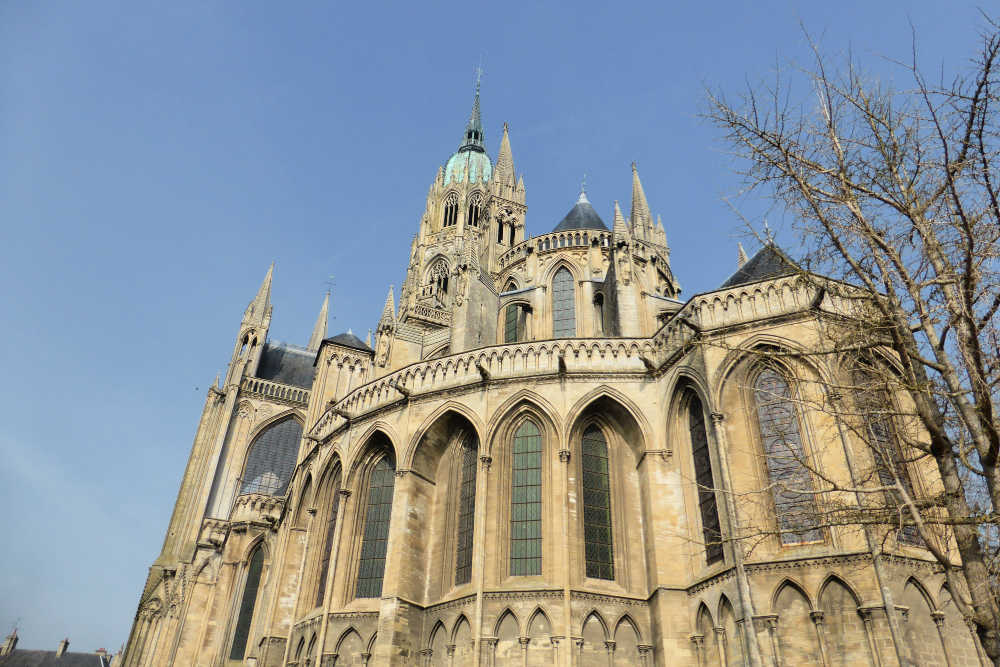
From Bayeux, it’s time to head back to the coast and Longues-Sur-Mer battery. The amazing thing about this battery of four guns is that the batteries still contain their guns. This and the fire control post that can be visited on the cliff edge allow visitors to get a better impression of how these batteries operated.
Moving along the coast we enter the first of the British landing beaches, Gold Beach. It’s here that you’ll find the relatively small Musée du Débarquement which contains beautiful scale models of the Mulberry Harbour that was built off the coast of Gold Beach to enable the Allies to have a deepwater harbour for resupply.
Directly outside the museum is Gold Beach itself, the third of the five beaches on the itinerary. If you can arrive here at low tide, you can walk out onto the beach and explore the Mulberry Harbour pieces that still rest on the beach after all these decades. These enormous concrete structures were towed across the English Channel and connected together to form a structure able to be used to offload millions of tonnes of supplies after D-Day.
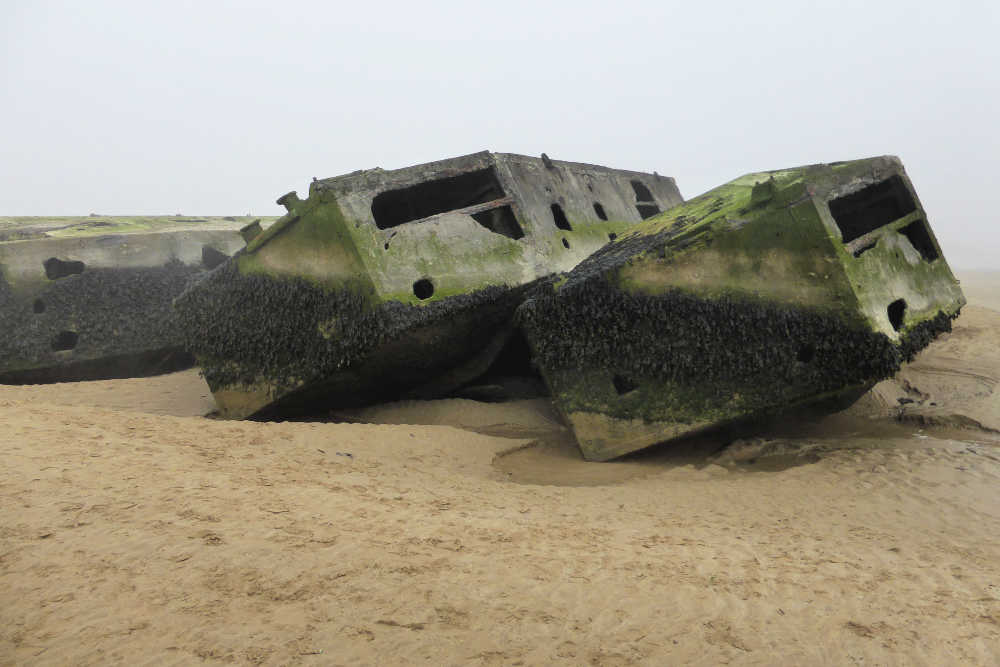
Heading further east takes you to the Canadian landing zone of Juno Beach. It was from the bridgehead established on this beach that the Canadian Forces moved the furthest inland and came closes to any of the landing zones of achieving the objectives for D-Day.
Next to the beach is the Juno Beach Centre where you can learn about the Canadian contribution to D-Day and the wider war effort. Starting with a film projected from within a simulated landing craft to set the scene, the museum holds many personal documents and photographs that help bring home the personal impact of the conflict.
The most easterly landing zone, Sword Beach is the final beach on our itinerary. It was here that the British 2nd Army landed with the goal of securing the eastern flank of the assault. 29,000 men landed here on D-Day, but one of the main objectives for the day, the capture of Caen, was still several kilometres out of reach.
Day 2 ends with a visit to the Canadian cemetery at Beny-Sur-Mer. 2048 soldiers are buried here from those who fell on D-Day to those killed in the Battle of Caen and the men who were illegally executed at Ardenne Abbey. Like all Commonwealth war cemeteries, it is kept in immaculate condition and is a peaceful and sobering place to visit.
Site Hillman | Memorial Pegasus | Ranville Cemetery and Church | Mont Canisy Battery | Villerville Pillboxes | Honfleur
The last day of this short, but intense, itinerary starts with a visit to Site Hillman. Site Hillman was a bunker complex and command post on D-Day and as such a prime target for the attacking forces. The job of securing the bunker was given to the 1st Battalion Suffolk Regiment of the British Army. The bunkers were well defended and difficult to capture, but they surrendered on the morning of the 7th June. The site is now a memorial after the land was given to the Suffolk Regiment by the former owner of the land.
Continuing east the itinerary takes you to one of the most daring stories of D-Day and an essential capture of bridges to secure the flank of the attacking forces and protect them from counter-attacks. Memorial Pegasus tells the story of how the 6th Airborne Division landed right next to the bridge in the dead of night early on D-Day and captured the bridge over the Caen canal. Across the new bridge, you can see a building that proudly proclaims that it was the first building to be liberated in France.
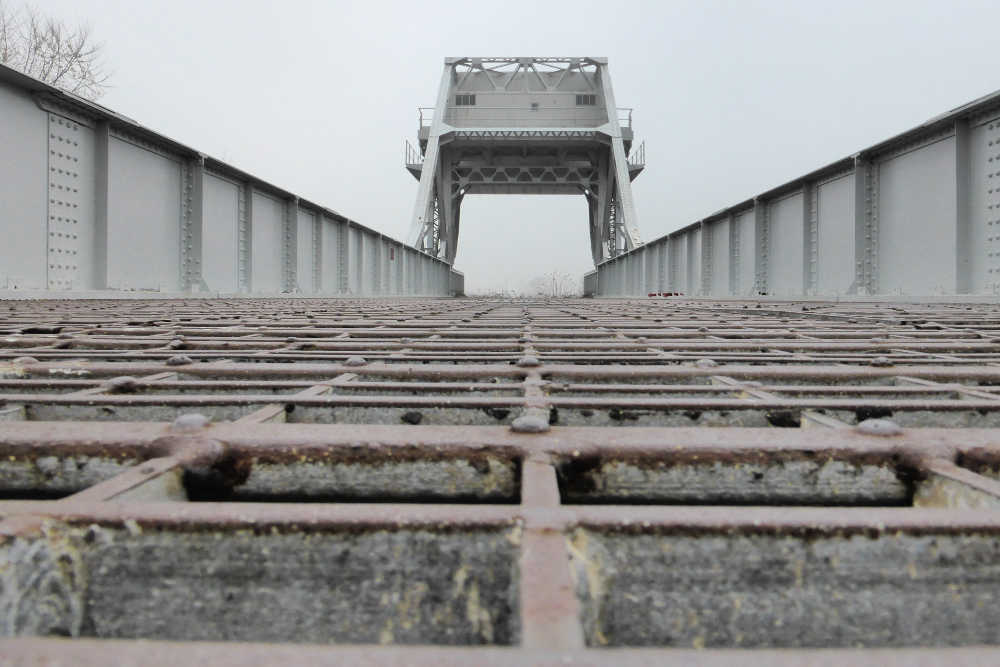
The nearby village of Ranville is the location of the Ranville War Cemetery where those who died in this attack, including the first allied casualty on D-Day Lieutenant H.D. Brotheridge, and others. 2,235 commonwealth soldiers are buried here, as well as 330 Germans and a few others. And a further 48 graves can be found within the churchyard.
The church is worth a visit to see the beautiful stain-glassed window that commemorates the capture of Pegasus Bridge with the words “In Memoriam 1944 6th Airborne Division”.
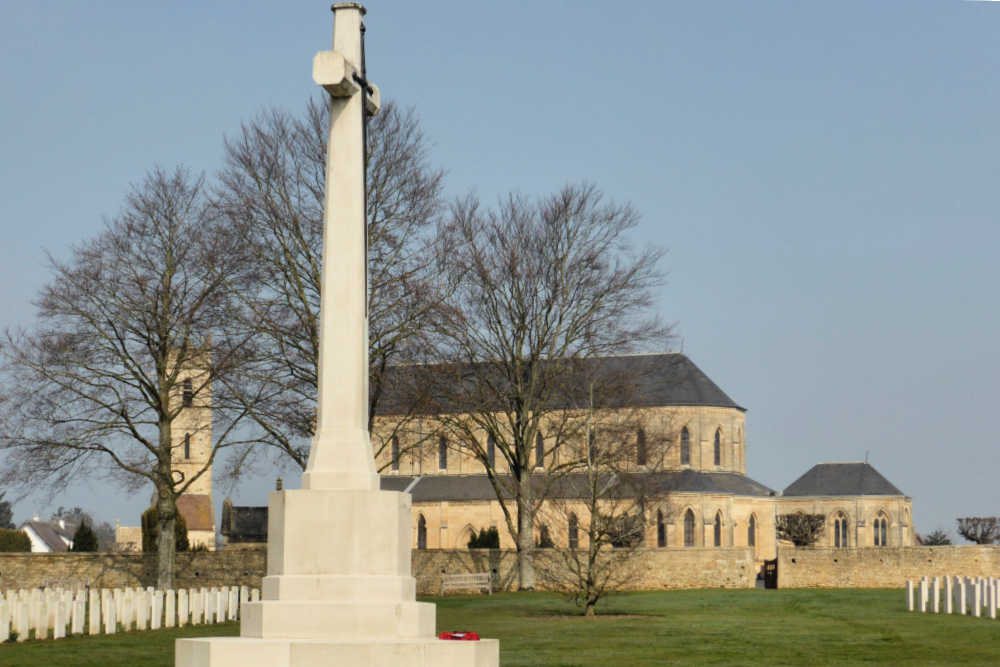
Heading outside the immediate area of D-Day our itinerary takes in Mont Canisy Battery. Though it saw very little action in the Battle of Normandy this means it is well preserved and an interesting place to visit. Built on top of a hill, it also offers great views of the surrounding area in places.
The final stop on the itinerary takes you to some pillboxes that are rarely visited. From the car park (marked on the map below) you have to walk about 750m (2,500 ft) along the beach to the east to get to the pillboxes. They are not in their original positions having slipped down the beach over the decades. Like the Mulberry Harbour pieces in Arromanche, the pillboxes are interesting to visit and explore.
READ MORE: If you have time to extend your trip, there are many other towns and places to explore in Normandy such as the nearby Honfleur with its cute harbour and wooden church, Église Ste-Catherine.
BEST TIME TO TAKE AN NORMANDY ROAD TRIP
In our opinion, the best time to visit Normandy is either the spring (March to May) or the autumn (mid-September to October). The weather is good (although it can vary so pack layers!) especially as it gets closer to May, or it can still be warm in September. The summer crowds aren’t in full swing and accommodation rates aren’t as high as the peak season.
BUT, some of the sites may only open during the high season, so be sure to check that any sites you specifically want to visit will be open during the time you plan to be there.
We visited in March and found almost everything we wanted to visit was open and nowhere we visited was very crowded. In some cases, we had “private” tours as we happened to be the only people visiting a particular attraction at the time, which was fantastic!
But you may not be able to visit during those times of the year so what should you expect in the summer or winter?
In the summer (June to mid-September) the days are long (like 10:00 pm sunsets), the weather is warm, and every sightseeing attraction, B&B, and hotel is open. However, with this, you’ll also find the biggest crowds, especially in the most popular sites. This is also the time of year where airfare, car rental, and hotel prices will be the highest. You should also be aware that there are usually events around many sites around the 6th June each year, so accommodation prices could be higher and some sites may be more crowded.
In the winter (November – February) there are fewer daylight hours and in many cases, you’ll find quite a few of the sites are closed. The weather is cold, wet, and can be foggy which can really put a damper on a day of sightseeing – especially when so much of the sights of Normandy are outside or exposed to the elements. But, you are likely to find great prices on airfares, hotels, and B&Bs (though some B&Bs may not be open at all).
Want to save this for later? Click the Pinterest button on the left for a pinnable image!
RESOURCES | PLAN YOUR NORMANDY ROAD TRIP
To book flights, rental cars, accommodations, and activities for your trip, please check out our recommended travel providers, favourite apps and websites.
- Rick Steves’ ‘Normandy TV show‘ episode
These are a few tours we would recommend for your Normandy road trip.
Some of the links in the post above are affiliate links. This means if you click on the link and purchase the item, we will receive an affiliate commission but this does not affect the price to you. Please read our full disclosure policy here.
